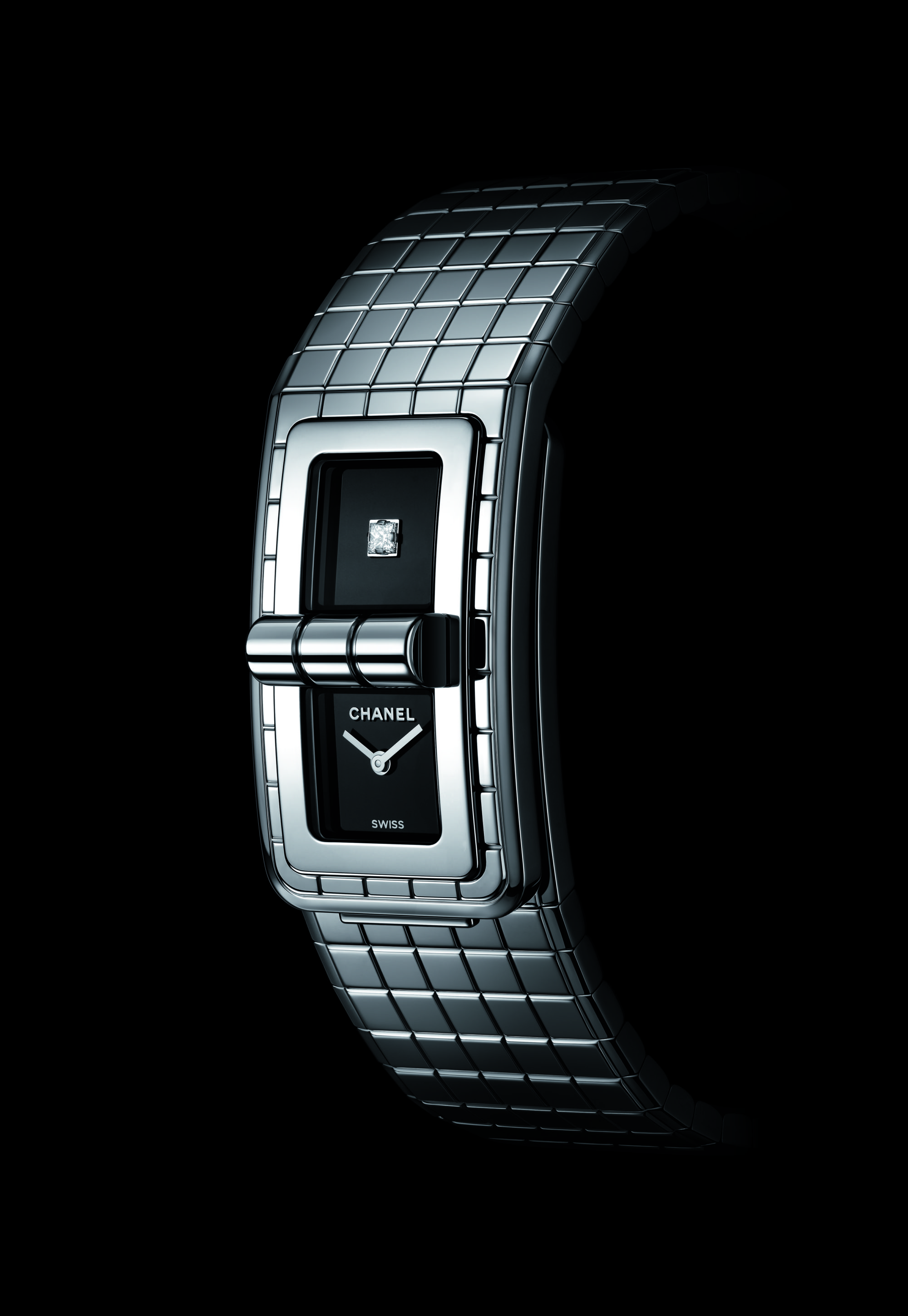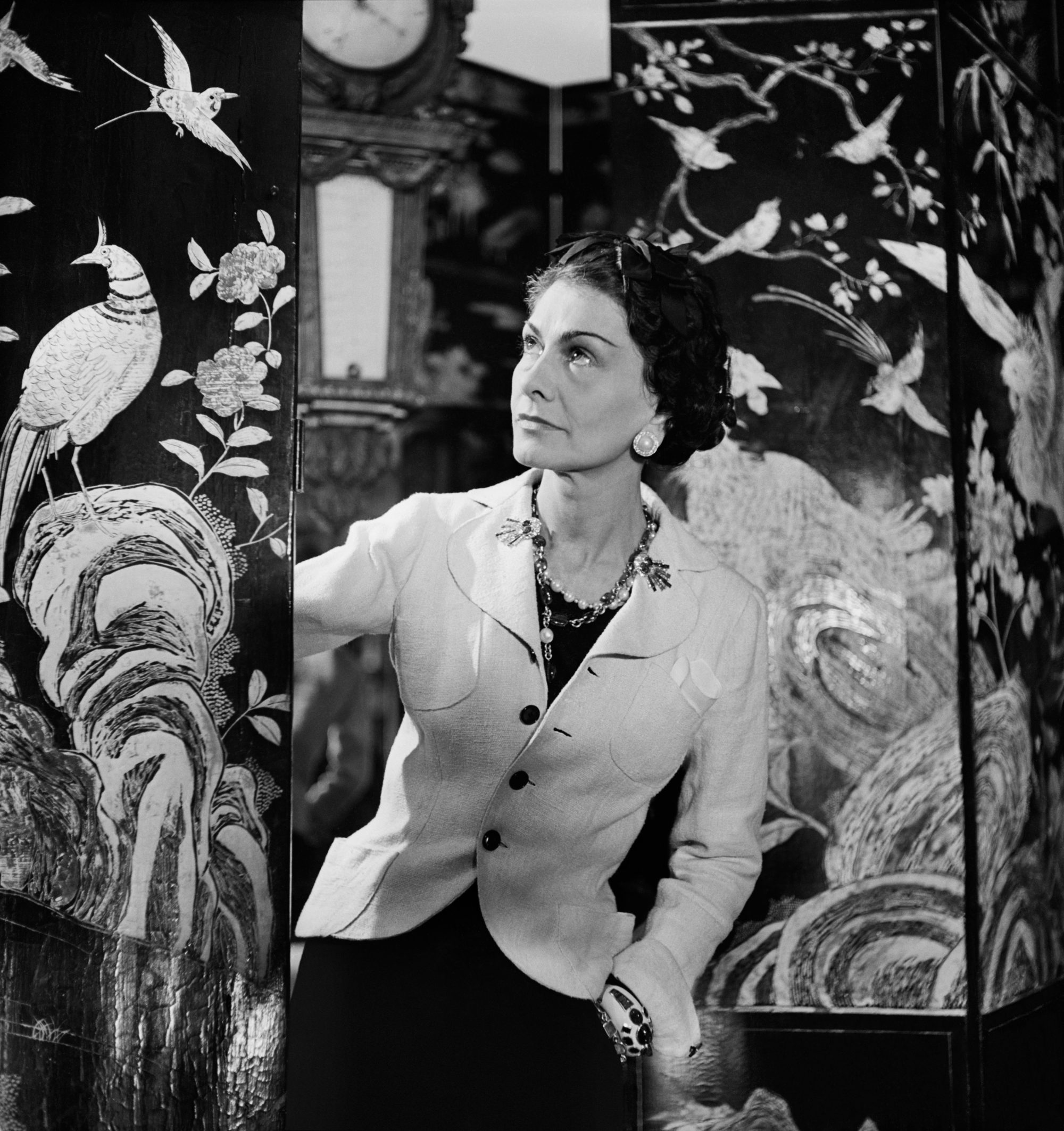There’s no arguing that Chanel is a newcomer to the haute horology block. In an industry that measures legacies in centuries, Chanel launched its first watch 30 years ago. But commitment to the category—bolstered by collaborations with independent watchmaker Romain Gauthier and ownership of watch assembly company Châtelain—was helped it gain on the old guard. Chanel’s mix of technical expertise and an archive crammed with best-selling fashion that has an established aura of cool, Parisienne elegance makes it an important touchstone.
The jewelry watch Code Coco is a case in point. It borrows design elements from one of Chanel’s iconic handbags, the 2.55, and features crisp, sophisticated engineering. Since debuting in February 1955, the 2.55 has had a bar-shaped closure called the Mademoiselle Lock, a moniker that—according to lore—referred to Coco Chanel’s perennially unmarried status (or her alleged habit of secreting love notes in her handbag). The same lock serves as a closure for the quartz-powered Code Coco. It clicks into two positions: When horizontal, the black lacquered dial, which measures 38.1 x 21.5 mm, is fully visible. When the lock swivels into a vertical orientation it conceals the watch’s hands, obscuring the passage of time. It’s a suitable gesture from a brand whose founder declared, “I don’t know how to be anywhere but in the present.”
The Code Coco’s flexible stainless steel bracelet unfurls from a bangle to a flat position once opened. A grid pattern that evokes the quilted leather exterior of the 2.55, decorates the polished metal—even the faintest movement scatters light across its textured surface. Another degree of glitz comes from diamond accents. Stainless steel models include a single diamond on their dials, and bezels with or without diamonds. A version in white gold, completely covered in diamonds, is available too—but in a limited edition of five, Chanel’s lucky number and the numeral associated with a certain famous perfume.
With the Première Camélia Skeleton, Chanel flexes its artistic and technical muscle in an ethereal package. Coco Chanel’s preferred flower is the central motif of the watch, and its skeletonized bridges form the graceful, looping outline of a camellia flower. Calibre 2, the first movement Chanel produced in-house for women, powers the timepiece; the mechanisms seamlessly nestle among the petals. Calibre 2 follows the 2016 introduction of Calibre 1, the brand’s original manufacture movement, which debuted in the well-received men’s watch Monsieur de Chanel. Some quibbled that a brand rooted in design for women would begin its in-house inventions with a men’s timepiece. Their worries may be allayed by seeing the latter offering get off to a highly auspicious beginning. The Première Camélia Skeleton with its Calibre 2 movement just received the ladies’ watch prize at the Grand Prix d’Horlogerie de Genève, three decades after the arrival of the first Chanel watch.
Chanel Code Coco in steel, chanel.com; $5,000.00


